Mahashivaratri
Festival
According to legend,this day marks the wedding anniversary of Lord
Shiva and Parvati. With the marriage to Parvathi,the devotees had a god
with form or Sagun Brahman. Without Parvathi, Shiva was a Nirgun
Brahman or a formless entity. There is also the belief that Shiva
manifested himself in the form of the Linga on this holy day.
Shiva and Parvati. With the marriage to Parvathi,the devotees had a god
with form or Sagun Brahman. Without Parvathi, Shiva was a Nirgun
Brahman or a formless entity. There is also the belief that Shiva
manifested himself in the form of the Linga on this holy day.
The second legend attributes Shivaratri as a form of thanksgiving to
the Lord, for protecting the universe from destruction. During Samudra
Mathana or churning of the ocean, a deadly poison emanated. The poison
was so deadly that even a drop would have destroyed the universe. When
the gods to beseech him for help. Lord Shiva’s stomach represents the
universe, so he drank the poison, but held it at his neck, turning it
blue.That is why devotees hail him as Neelakanth.
the Lord, for protecting the universe from destruction. During Samudra
Mathana or churning of the ocean, a deadly poison emanated. The poison
was so deadly that even a drop would have destroyed the universe. When
the gods to beseech him for help. Lord Shiva’s stomach represents the
universe, so he drank the poison, but held it at his neck, turning it
blue.That is why devotees hail him as Neelakanth.
Another legend says, on this day of Mahashivaratri, Lord Shiva performed a special dance, the Thandava Nritya
or the cosmic dance of creation,preservation and destruction. In this
dance, Shiva destroys the old world and creates a new one. His dance
represents the energy flowing through the world giving it the seasons,
day and night and birth and death.
There is a fourth legend associated with Maha Shivaratri. Once, a
hunter was unsuccessfully looking for a prey in the forest. He couldn’t
find anything for the whole day. Towards evening, he climbed on a Bael
tree and continued his wait. As he was drinking some water he had
picked up at a stream earlier, a few drops fell on the ground
below. Impatient with his wait, he plucked a few bael leaves and drops
them down as well. Soon, a female deer or doe comes to the spring. When
the hunter takes aim, the deer, having seen him, implores him to wait a
just little bit more so that she can bid farewell to her kids. The
hunter agrees. When the female deer comes back, the male deer
accompanying her asks the hunter to shoot him instead. The foals then
come forward and also plead with the hunter to take their lives
instead. The hunter is moved with their sacrificial nature and unity
and lets them all go. When he alights from the tree, he is pleasantly
surprised to see Lord Shiva there.
hunter was unsuccessfully looking for a prey in the forest. He couldn’t
find anything for the whole day. Towards evening, he climbed on a Bael
tree and continued his wait. As he was drinking some water he had
picked up at a stream earlier, a few drops fell on the ground
below. Impatient with his wait, he plucked a few bael leaves and drops
them down as well. Soon, a female deer or doe comes to the spring. When
the hunter takes aim, the deer, having seen him, implores him to wait a
just little bit more so that she can bid farewell to her kids. The
hunter agrees. When the female deer comes back, the male deer
accompanying her asks the hunter to shoot him instead. The foals then
come forward and also plead with the hunter to take their lives
instead. The hunter is moved with their sacrificial nature and unity
and lets them all go. When he alights from the tree, he is pleasantly
surprised to see Lord Shiva there.
Actually, underneath the bael tree, there was a Shiva Lingam nestled
in the thicket there. The hunter had unknowingly worshipped that lingam
by sprinkling water and throwing bael leaves on it. When he had
exhibited compassion to the deer family even in dire hunger, he had
pleased Lord Shiva. As a result, Lord Shiva bestowed wealth and
prosperity on him. From that day, the Shiva lingam is worshipped on
this auspicious day, and hailed as Maha Shivaratri.
in the thicket there. The hunter had unknowingly worshipped that lingam
by sprinkling water and throwing bael leaves on it. When he had
exhibited compassion to the deer family even in dire hunger, he had
pleased Lord Shiva. As a result, Lord Shiva bestowed wealth and
prosperity on him. From that day, the Shiva lingam is worshipped on
this auspicious day, and hailed as Maha Shivaratri.
When is
Shivaratri?
Shivaratri 2011 is onWednesday 2 march
Auspicious
“OM NAMAH SHIVAYA”
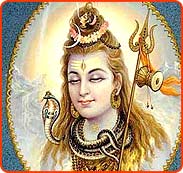
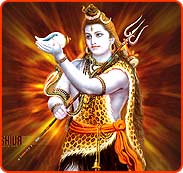
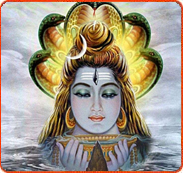
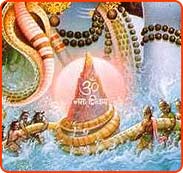
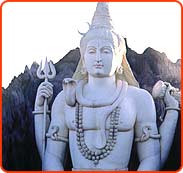
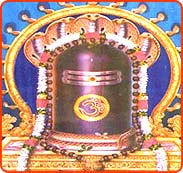
No comments:
Post a Comment